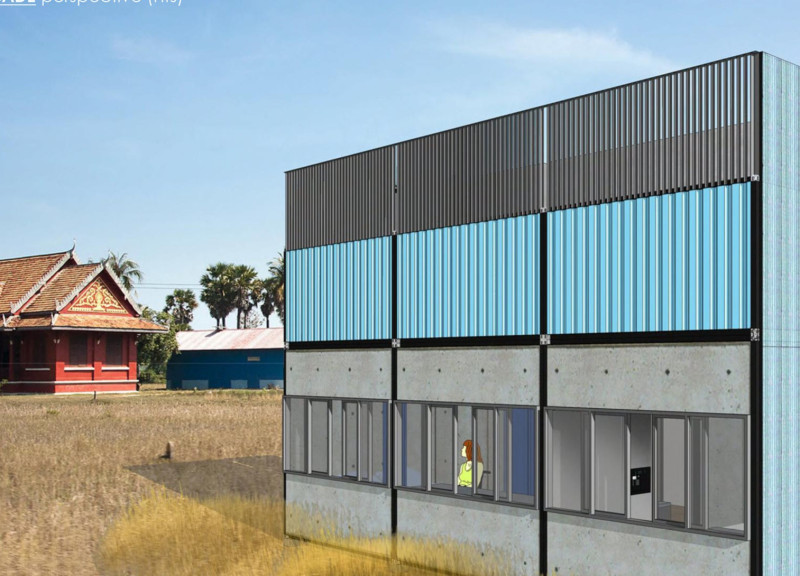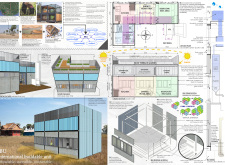5 key facts about this project
The design is located in a rural area between Phnom Penh, the capital of Cambodia, and Sihanoukville, a key industrial city. It is intended for a newly-wedded couple who are handicapped, having lost their legs due to landmine incidents. The concept focuses on creating a home that meets their specific needs while emphasizing functionality, accessibility, and sustainability.
Modularity and Adaptability
The approach is based on modular design, drawing inspiration from container architecture. This allows for both horizontal and vertical growth, making it possible for the living space to expand as the family grows. Each module is designed to provide essential living areas while remaining flexible enough for future adjustments, reflecting the occupants' changing needs.
Accessibility Features
Access is a critical aspect of the design, with elements in place to accommodate the couple's requirements. A Vertical Platform Lift (VPL) is included to enable easy movement between different levels of the home, including access to the roof terrace. This feature helps ensure that all spaces are reachable, allowing the occupants to navigate their home independently.
Sustainable Practices
Incorporating sustainability is vital, especially in the context of Cambodia’s environment. Planter boxes are featured to support the growth of vegetables, herbs, and spices, encouraging self-reliance in food production. A rainwater collection tank is incorporated into the system to help conserve water, addressing local climate challenges. Also, solar PV cladding on the East and West facades enriches energy management, using sunlight to power the home.
Material Selection
Material choices focus on durability and energy efficiency. The project employs Aerated Lightweight Concrete (ALC) panels, which are key to the structure's stability and thermal properties. This material aligns with the goals of creating a sustainable and long-lasting living environment.
Large windows allow natural light to fill the interior, creating a welcoming atmosphere while offering views of the landscape. The design encourages an enhanced connection with the surrounding environment, emphasizing harmony with nature.



















































